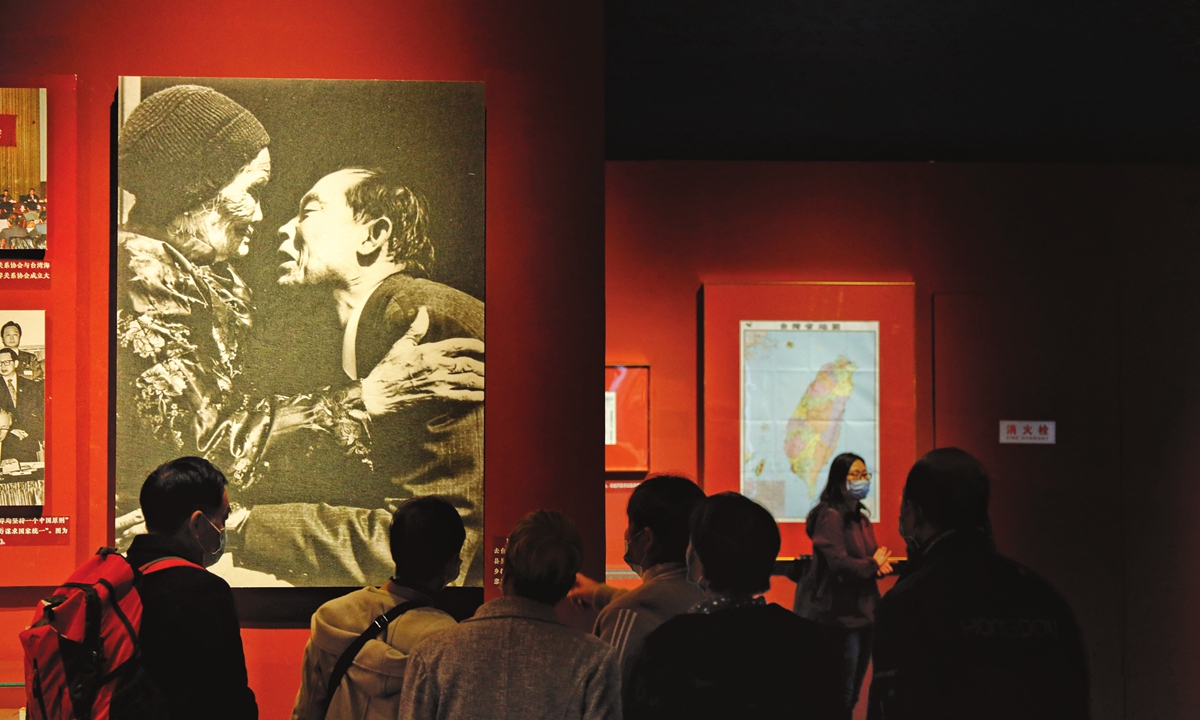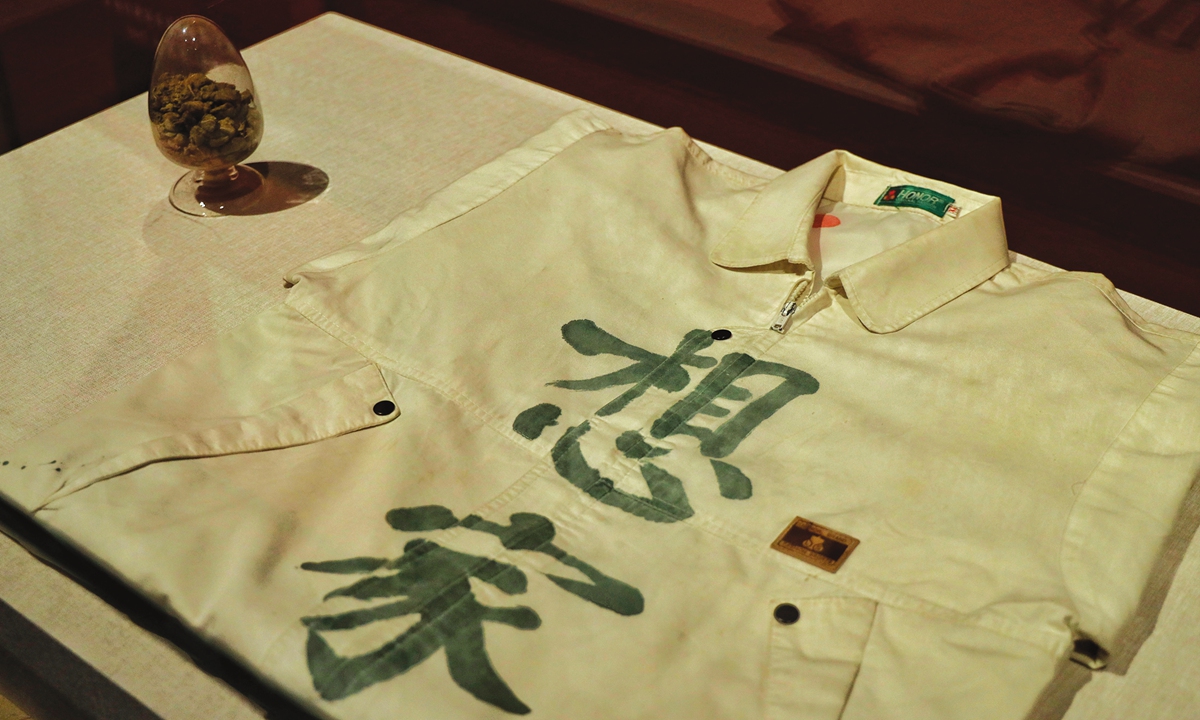Exhibition on recovery of Taiwan from Japanese colonial rule opens at National Museum of China
By Chen Xi Source: Global Times Published: 2020/10/28 17:58:40

Visitors explore an exhibition commemorating the 75th anniversary of the recovery of the island of Taiwan from Japanese colonial rule at the National Museum of China. Photo: Li Hao/GT
At an exhibition commemorating the 75th anniversary of the recovery of the island of Taiwan from Japanese colonial rule held at the National Museum of China, many visitors could be seen gathering around and staring at a black and white photo, some moved to tears by what they saw.The photo shows a 106-year-old mother living in the Chinese mainland finally reuniting with her son, who had been living on the island of Taiwan for the past 40 years unable to return home due to war. The son is kneeling down in front of his mother as they both look at each other with eyes full of tears.
"How many people can live to be 106 years old? She is a lucky woman to be so long-lived and has the destiny of seeing her son," a 70-year-old woman surnamed Gao told the Global Times with tears in her eyes, adding that she could empathize with their situation.
Gao said her father and his eldest brother, a member of the Communist Party of China (CPC) and a member of the Kuomintang (KMT) respectively, had been separated from each other after her uncle went to the island of Taiwan and that they had never got the chance to reunite before their deaths.
Memorable exhibition
Kicked off at the National Museum of China on Sunday, the exhibition is divided into six sections that show the complete history of the island of Taiwan from ancient to modern times by displaying representative historical items.
Wang Chunfa, curator of the museum, said that the exhibition is being held to review the heroic
struggle of Taiwan compatriots against Japanese occupation and colonial rule in Taiwan and how people from both sides of the Taiwan Straits fought against foreign aggression and achieved a great victory.
Taiwan was ceded to Japan in 1895 under the Treaty of Shimonoseki, after the Qing Dynasty (1644-1911) regime was defeated by Japan in the first Sino-Japanese War. On October 25, 1945, China recovered the island that had been occupied by Japan for half a century.
A civil war broke out in China shortly after the recovery of the island of Taiwan. The KMT was defeated by the CPC and retreated to the island of Taiwan in 1949.
According to the exhibition's introduction, more than 160 sets of cultural relics from the museum and more than 50 copies of important documents and archives from the Qing Dynasty till today are on display.
"After watching the exhibition, I learned more details about the history of the island of Taiwan. One of the most impressive and touching items I saw was a jacket printed with the two characters Xiang Jia (missing home) that was worn by a Taiwan compatriot when he returned to the motherland to visit his family," 22-year-old postgraduate student Zhang Zhaoming told the Global Times.
She noted that her mood rose and fell as she explored the exhibition.
"Although it is a part of history, I still felt very angry when seeing photos of the Japanese army occuping the island of Taiwan. They treated local students in Taiwan with serious ethnic discrimination. I was touched to see many minority peoples in Taiwan fight against the invaders."

A jacket printed with the two characters Xiang Jia (missing home) that was worn by a Taiwan compatriot when he returned to the motherland to visit his family Photo: Li Hao/GT
A big family
These historical documents and precious cultural relics reflect the history of the island of Taiwan' s return to China, which strongly proves that the island of Taiwan is an inalienable part of Chinese territory and reveal that national rejuvenation and national reunification are a general trend, according to the official WeChat account of the museum.
The Chinese brush that Chen Yi, chief executive and garrison commander of the island of Taiwan, used during the ceremony of signing Japanese Instrument of Surrender on October 25, 1945 is also on display at the exhibition, which also gained a lot of attention among visitors.
"When I saw the Chinese brush, I got goosebumps on my skin. It seems that I went back to the day and saw the Empire of Japan surrender to us," a 59-year-old Beijinger surnamed Chen told the Global Times.
"This exhibition held at this point of time will have certain benefits for the reunification of the motherland. We are a peace-loving nation," she added.
An online version of the exhibition will be launched on the official website of the National Museum of China after the two-month exhibition comes to an end to allow more people from both sides of the Taiwan Straits, especially Taiwan compatriots, to be able to watch the exhibition.
"I hope more cultural exchanges and communication events between the Chinese mainland and the island of Taiwan can be held for young people so that we can learn more about each other. After all, we are one big family," a 20-year-old visitor surnamed Feng from Dalian, Northeast China's Liaoning Province, told the Global Times.
Newspaper headline: A return home
Posted in: RELATIONSHIPS,CULTURE & LEISURE